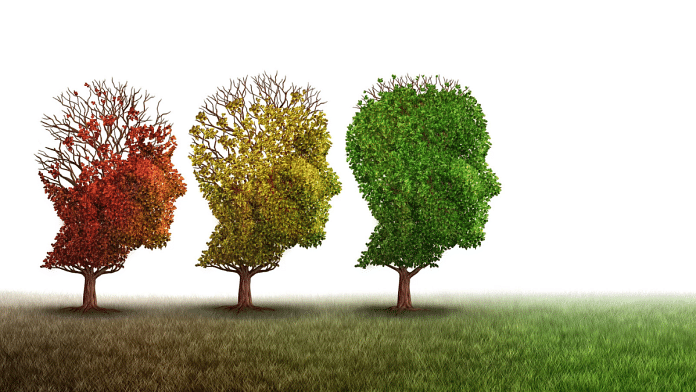Imagine navigating a bustling city with a screaming toddler clinging to your leg. Now picture an elderly person struggling to interpret a complex public transport map. For everyone, these situations can be frustrating. But for neurodivergent individuals, they can become overwhelming sensory assaults.
Many cities prioritize aesthetics over accessibility, creating environments that exclude a significant portion of the population. This impacts quality of life and, critically, hinders participation in sustainable practices. But it doesn’t have to be this way.
Neurodiversity is the idea that brains work in all sorts of ways. There’s no single “correct” way to think, learn or act, and these differences shouldn’t be seen as deficits. Neurodiverse people have unique strengths and talents but experience the world differently and struggle in some ways when navigating neurotypical city designs.
Neurodiversity in the population
In the UK, 15-20% of the population is neurodivergent. That’s 13 million people, including 700,000 with Autism Spectrum Condition and two million with dyslexia. Neurodiversity goes beyond autism, encompassing attention deficit hyperactivity disorder (ADHD), dyscalculia, dysgraphia and others. Rising diagnoses — notably autism’s 787% increase — and a post-pandemic surge in referrals highlights the need to consider neurodiversity in urban planning. We can’t afford to ignore such a growing population.
The shortcomings of urban planning for neurodiversity
The social model of disability, which explains disability as being caused by society’s barriers, not an individual’s condition, has greatly influenced geographers to study city designs and the influence of people’s attitudes on people with disabilities. However, there’s a gap in research on how cities can be inclusive. Most studies focus on physical disabilities, neglecting the needs of people with intellectual or learning disabilities. The Design Council explains good urban design as creating places that are pleasant to use, safe for everyone, easy to navigate and built for people. Cities can be challenging for neurodiverse people due to sensory overload, unclear navigation and social exclusion. Experiences vary by age, gender and neurological condition. Inaccessible public transport and unpredictable environments exacerbate anxiety and limit access to city life for neurodivergent individuals.
Sensory overload and cities
Cities constantly bombard our senses with sights, sounds, smells and movement. This can be overwhelming for anyone, but especially for neurodivergent individuals who may experience sensory processing differences. Unfortunately, the Global Sustainability Movement, despite its environmental benefits, often overlooks these challenges. Bustling farmers’ markets, for example, can be a sensory overload. Complex recycling instructions, unclear eco-labels and even green options like cycling (which can be overwhelming in traffic) can all become barriers to participation for neurodivergent individuals.
The information gap and greenwashing
Furthermore, the prevalence of greenwashing — misleading marketing about sustainability — can be particularly frustrating for those with processing difficulties. Unclear policies and a lack of accessible information make it difficult to make informed choices. Untrained staff at sustainable stores or markets may be unable to answer questions clearly, and expensive organic or sustainable food options can further exclude those on a tight budget.
For true sustainability, inclusivity is essential.
6 ways to design sustainable, comfortable cities
● Inclusive design: Build inclusive solutions from the start. This means involving neurodiverse individuals in city planning, listening and ensuring their voices shape a future that works for everyone.
● Accessible information: Use clear language and visuals, and offer information in multiple formats on signage, maps and guides. This benefits everyone, from tourists to those with learning or visual impairments.
● Designated peaceful escapes: Scatter parks with calming features like water sounds, create tiny gardens in buildings and designate quiet areas in libraries and community centres. They help everyone relax and connect with nature.
● Walkable cities: Encouraging walking and cycling infrastructure reduces car dependency, leading to quieter streets, cleaner air and a more vibrant public space. This benefits neurodivergent individuals and promotes physical activity while reducing carbon emissions.
● Accessible public transport: Quieter carriages, designated low-sensory waiting areas and clear visual timetables make public transport a viable option for everyone.
● Inclusive mobility options: Promote accessible bike paths and offer alternative choices like electric scooters alongside walking and cycling infrastructure.
Neurodiversity: A force for climate action
The climate movement is gaining a powerful new force: neurodiversity. Individuals with autism, ADHD and other neurological differences possess strengths that translate to environmental action. Their keen observation skills, detail-oriented focus and passion for justice make them invaluable assets. Naturalists like Chris Packham and Dara McAnulty, climate activist Greta Thunberg, engineer Tori Tsui, inventor Boyan Slat and activist and hip-hop artist Xiuhtezcatl Martinez are just a few examples of neurodivergent individuals making an impact. Their unique focus, passion and innovative thinking hold immense potential for positive change.
Inclusive urban design plays a crucial role in unlocking this potential. This sense of belonging empowers neurodivergent individuals to participate in sustainability efforts, enriching the environmental movement with their unique strengths and perspectives. When cities become more inclusive, the climate movement becomes more powerful.
Public spaces are becoming more welcoming for neurodivergent individuals. Sensory gardens, quiet library zones and autism-friendly screenings at cinemas like Glasgow Film Theatre offer calming refuges. Museums like the London Transport Museum provide visual aids and social stories for easier navigation. Programmes like “Autism Hour” at the National Trust create structured activities in supportive environments. The “Sensory City” project in Yokohama, Japan and Sensory Parks in Chennai use design elements to create accessible paths with tactile paving and audio guidance. Even shopping is becoming more inclusive with autism-aware hours offering reduced noise and lighting. Sports venues are joining the movement, with sensory rooms now available at some stadiums.
Inclusive design for neurodiversity isn’t just social justice, it’s smart city planning. Clear signage, accessible transport and calming spaces benefit everyone, from tourists navigating a new city to parents with young children. We can build cities that are not just green, but welcoming and empowering for all.
This article first appeared in the World Economic Forum.
Also read: ‘Historic moment’ — here’s what G20 Delhi Declaration means for fight against climate change



